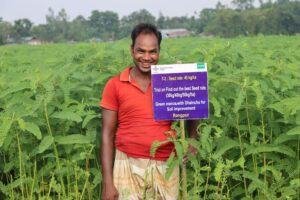
Approximately 70% of the world’s 1.3 billion poor people live in Asia, where rice is the staple food. To some extent, this reflects Asia’s large population, but even in relative terms malnutrition appears to affect a substantially larger share of the population in South Asia than in Africa. For these people, rice is the most important commodity in their daily lives. In countries such as Bangladesh, Vietnam and Myanmar, the average citizen consumes 150–200 kg annually, which accounts for two-thirds or more of caloric intake and approximately 60% of daily protein consumption. Even in relatively wealthier countries such as Thailand and Indonesia, rice still accounts for nearly 50% of calories and one-third or more of protein.
Rice is also the most important crop to millions of small farmers who grow it on millions of hectares throughout the region, and to the many landless workers who derive income from working on these farms.
At low levels of income, when meeting energy needs is a serious concern, people tend to eat coarse grains and root crops such as cassava and sweet potato. At that lowest stage of economic development, rice is considered a luxury commodity. With increasing income, demand shifts from coarse grains and root crops to rice. At high levels of income, rice becomes an inferior commodity, and consumers prefer diverse foods with more protein and vitamins, such as vegetables, bread, fish and meat.
Growing urbanization that accompanies economic growth leads to changes in food habits and the practice of eating away from home, which further reduces per capita rice consumption. The more industrialized countries of Asia, such as the Republic of Korea, Japan, Taiwan (China), Malaysia and Thailand, have begun to experience a decline in per capita rice consumption after reaching high levels several decades earlier. But these high- and middle-income countries account for less than 10% of total rice consumption in Asia.
The annual income threshold at which consumers start substituting higher quality and more varied foods for rice is estimated at around US$1,500. This income threshold has not yet been reached in Bangladesh, China, India, Indonesia, Myanmar, the Philippines and Vietnam. These countries account for more than 80% of total rice consumption and are going to dominate the future growth in demand.
_________________________________________
Adapted from Maclean JL, Dawe DC, Hardy B, Hettel GP, editors. 2002. Rice Almanac, Third Edition. Wallingford (UK): CABI Publishing and Los Baños (Philippines): International Rice Research Institute. 253 p.









